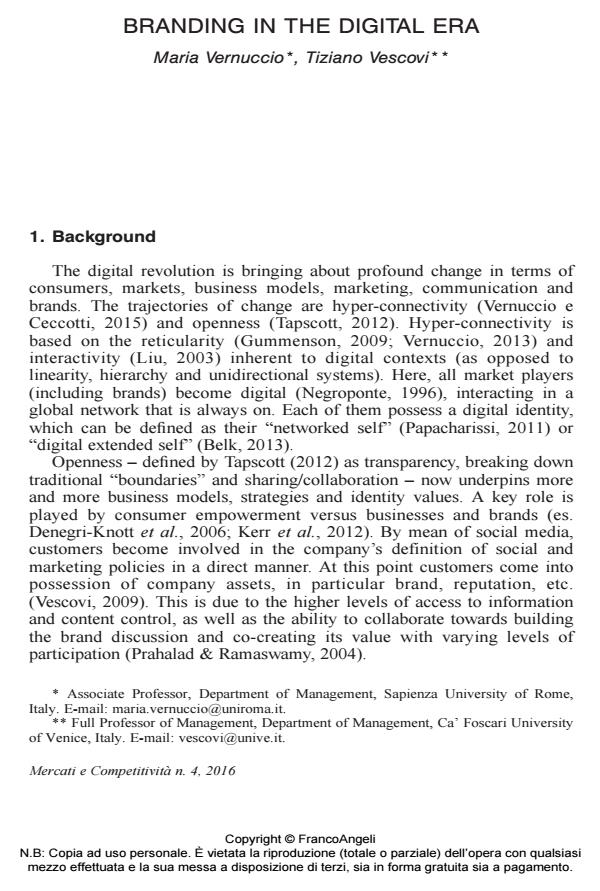Branding in the digital era
Journal title MERCATI & COMPETITIVITÀ
Author/s Maria Vernuccio, Tiziano Vescovi
Publishing Year 2016 Issue 2016/4
Language English Pages 8 P. 15-22 File size 58 KB
DOI 10.3280/MC2016-004002
DOI is like a bar code for intellectual property: to have more infomation
click here
Below, you can see the article first page
If you want to buy this article in PDF format, you can do it, following the instructions to buy download credits

FrancoAngeli is member of Publishers International Linking Association, Inc (PILA), a not-for-profit association which run the CrossRef service enabling links to and from online scholarly content.
- CEOs of dual marketers organizations: Communication and reputation management issues Francesca Conte, Agostino Vollero, in MERCATI & COMPETITIVITÀ 3/2018 pp.21
DOI: 10.3280/MC2018-003003 - Influencer identification and selection on social networking sites: An analysis on Instagram Roberta De Michele, Gianluca Marchi, in MERCATI & COMPETITIVITÀ 4/2018 pp.129
DOI: 10.3280/MC2018-004008 - What is happening to the brand? Maria Vernuccio, in MERCATI & COMPETITIVITÀ 4/2018 pp.7
DOI: 10.3280/MC2018-004001
Maria Vernuccio, Tiziano Vescovi, Branding in the digital era in "MERCATI & COMPETITIVITÀ" 4/2016, pp 15-22, DOI: 10.3280/MC2016-004002